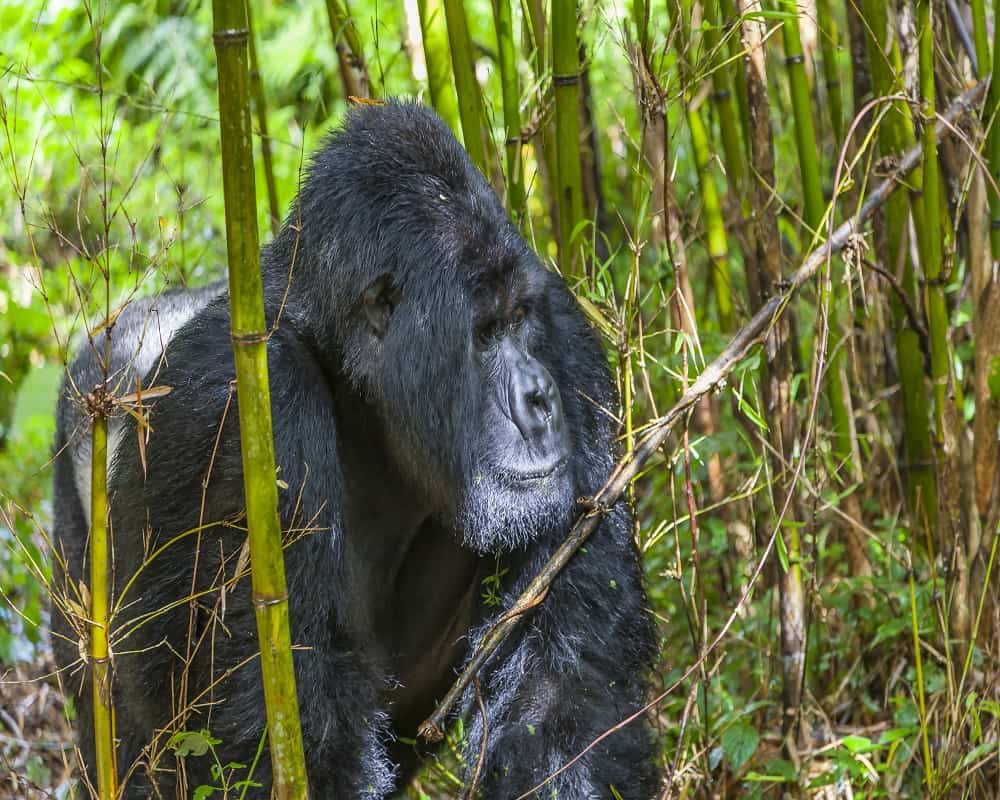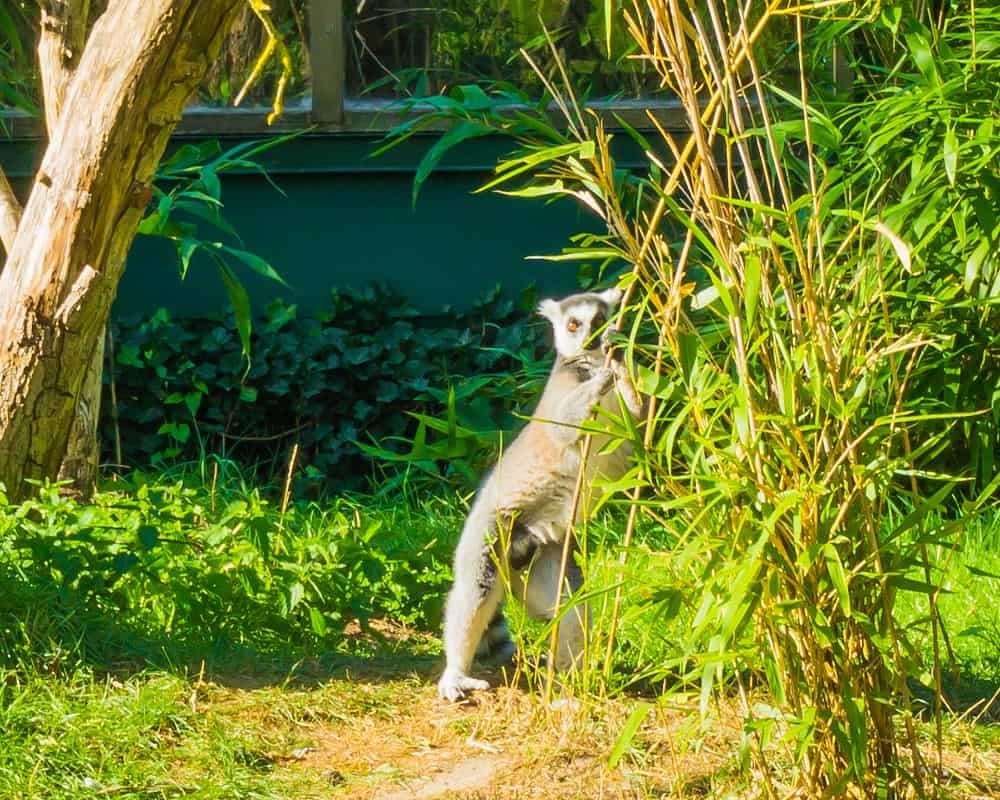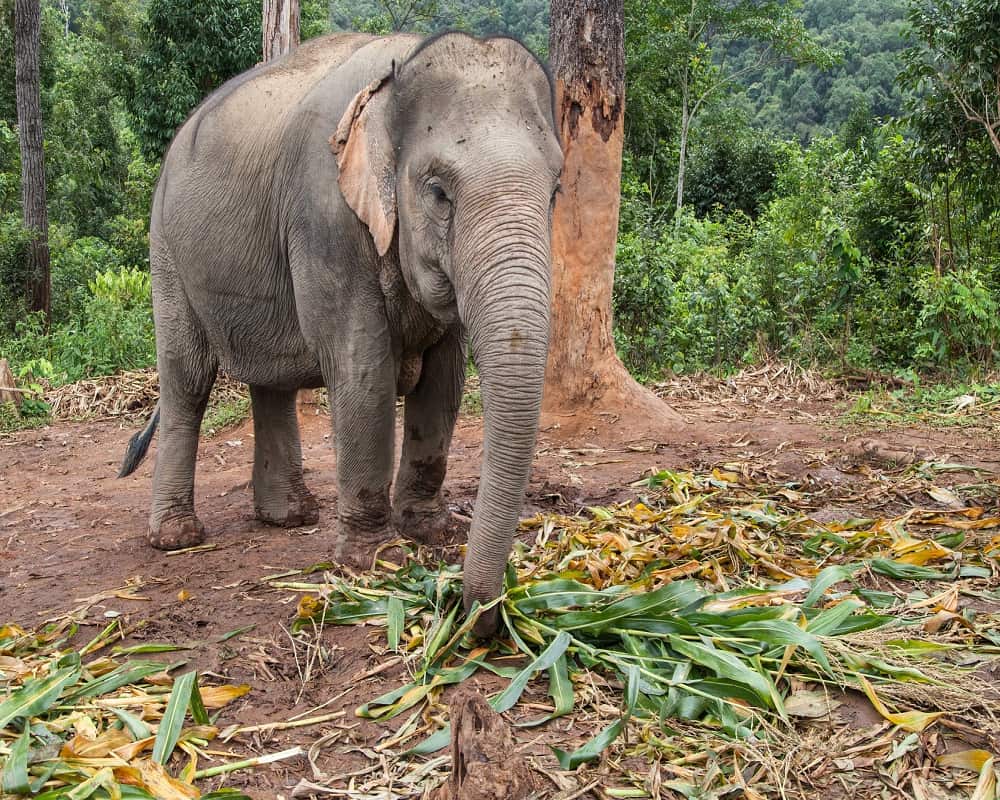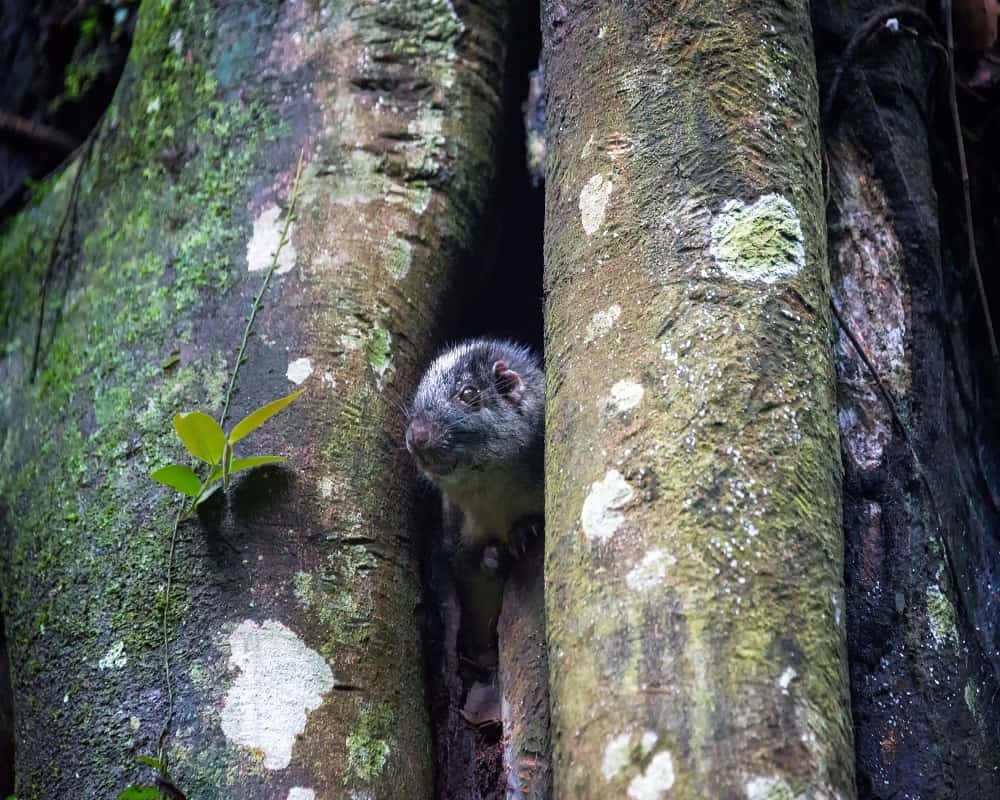Last updated on October 9th, 2022
Many animals that eat bamboo do so exclusively, while a few others prefer to eat this evergreen flowering grass occasionally.
In fact, we human beings like to eat cuisines having bamboo shoots, especially in countries like China, India, Japan, Thailand, Nepal, Taiwan, etc.
But coming back to our discussion, some animals intake large qualities of bamboo. It’s interesting how these animals depend heavily on bamboo as a staple diet since bamboo stalks are extremely strong.
Animals that eat bamboo:
- Giant Panda
- Red Panda
- Mountain Gorilla
- Bamboo Lemur
- Chimpanzee
- Asian Elephant
- Bamboo Rat
Did you know that bamboo is a type of grass? Yes, bamboo belongs to the same family as grass that’s known as Poaceae, and there are more than 1000 bamboo species across the globe.
Furthermore, this perennial plant is known for growing exceptionally fast. A running bamboo even has the ability to cover vast areas and expand its roots underground even before the proper development of its shoots, which grow upwards.
For many animals and us human beings, bamboo shoots are a rich source of fiber. So, here’s a list of the animals that eat bamboo.
List of animals that eat bamboo
1. Giant Panda

We’ve all seen those cute little pandas feeding voraciously on bamboo. Bamboo leaves and shoots are the staple diet of pandas.
In fact, a panda’s daily diet includes the entire parts of bamboo, such as leaves, fresh shoots, and stems of various bamboo species.
Sadly, even though giant pandas have the most suitable physical characteristics to feed on bamboo, they, however, cannot absorb the required energies by digesting cellulose.
Since bamboo has very little nutritional value for giant pandas, they must eat around 12-38 kg of bamboo plants to meet their necessary energy requirements.
Pandas can digest starch and this is why these fascinating black and white panda species choose to feed on those parts of the bamboo tree that contain the maximum amounts of starch.
Giant pandas’ favorite portion of this plant is the soft bamboo shoots, followed by the young and tender leaves.
Did you know that giant pandas are known to eat around 25 different species of bamboo plants?
Giant pandas do eat other plants as well and sometimes even meat. Although pandas are majorly herbivores, they also hunt for small rodents and pikas at times.
However, these foods make up only around 1% of their daily diet, with their staple diet being bamboo plant parts.
Pandas are so heavily dependent on bamboo that if there is any loss of their natural habitat, the panda bear will be the most vulnerable.
This food shortage for pandas due to natural habitat destruction is currently one of the most severe concerns in the animal world.
2. Red Panda

Red panda, as the name implies, has reddish-brown fur and a long tail. Surprisingly, this panda species is around the size of a domestic cat, with a slightly longer body.
Red pandas live in high altitudes and are native to the eastern parts of the Himalayas and some parts of southwestern China.
We don’t get to hear about or see these adorable creatures because the estimated red panda population around the world is lower than 10,000 mature individuals.
Unfortunately, the numbers are declining, mostly due to a rapid loss of habitat, poaching, fragmentation, and inbreeding depression.
In fact, the IUCN Red List has declared red pandas as Endangered species.
Similar to giant pandas, red pandas rely heavily on bamboo as well.
Although these arboreal creatures feed on other things, such as insects, birds, fruits, succulent grasses, roots, small mammals, and eggs, around 85-95% of a red panda’s diet includes bamboo.
However, unlike giant black and white pandas, red pandas feed selectively on this plant and choose the most nutritious portions, including leaf tips and tender, young shoots (when available).
3. Mountain Gorilla

Mountain gorillas are primarily herbivores in nature, and a major portion of their diet (around 85.8%) includes shoots, leaves, and stems of as many as 142 plant species.
Mountain gorillas are the subspecies of eastern gorillas, and as the name suggests, they live in high altitudes, mostly in forests in the mountain regions.
Mountain gorillas are also included in the list of Endangered species by the IUCN (as of 2018).
A typical diet of a mountain gorilla consists of plant parts, including leaves, stems, shoots, fruits, flowers, roots, and bark.
These terrestrial animals also feed on some small invertebrates, like insects.
Mountain gorillas travel to bamboo forests, especially during a few particular months of the year when these evergreen flowering plants give rise to fresh shoots.
4. Bamboo Lemur

Bamboo lemurs, also known as gentle lemurs, are found exclusively in Madagascar.
These medium-sized species are characterized by their grey-brown fur, but the shades vary by different species.
Bamboo lemurs are so named because they spend most of their time living in damp forests in which bamboo plants grow. And, of course, because they feed exclusively on bamboo.
A bamboo lemur’s body is considered to detoxify high cyanide amounts that are contained in bamboo shoots, but the way they do so is still unknown.
These arboreal animals live in the trees for most of the day. Often bamboo lemurs are active immediately after dawn, although they can remain active at other times of the day.
5. Chimpanzee

Chimpanzees, like human beings, are omnivorous, which means they feed on both plants and meat. Also known as common chimpanzees or simply chimp, these creatures are a species of the great ape.
Some of the common food items that a chimpanzee’s diet comprises are leaf buds, leaves, seeds, stems, blossoms, bark, resin, pith, a variety of nuts, honey, soils, eggs, birds, and insects.
Although bamboo is not their main food source, chimps like to feed on bamboo plants.
Chimpanzees eat bamboo shoots, however, the bamboo shoots are only available in abundance from early June to late September.
Since chimpanzees love to feed on termites and insects, they would use a bamboo rod to extract the termites out of their nests and feed on them grumpily.
6. Asian Elephant

The Asian elephant or Asiatic elephant, famous for being the largest terrestrial mammal in Asia, is found widely in the Indian subcontinent and some parts of Southeast Asia.
There are three known subspecies of the Asian elephant, namely, E. m. indicus (from mainland Asia), E. m. maximus (from Sri Lanka), and E. m. sumatranus (from Sumatra).
The IUCN Red List has also listed the Asiatic elephant as an Endangered species after the population declined by around 50% since their last three generations.
The primary threats that made these elephants endangered include habitat degradation, loss of habitat, poaching, and fragmentation.
Besides, those elephants held captive in zoos are reported to die at a very young age, which is concerning!
The probable reasons include low birth rates and an alarmingly high death rate.
Asian elephants are native to wet forest areas and grassland habitats across 13 countries.
Elephants primarily feed on forage plants; however, they are known for adapting well to different habitats or surroundings and feeding on the resources specific to that area.
As we may have already inferred from the huge size of these beautiful species, elephants consume huge amounts of food!
A healthy elephant can eat up to 150 kg of plants from across 112 different species of plants.
Elephants consume a variety of bamboo plants, but their favorite one is Mai Roak Bamboo. They would eat most of a bamboo plant, such as its tender shoots, leaves, stems, and seedlings.
Besides, these “trunk” animals need around 68 to 150 liters of water every day – not only for drinking but for bathing themselves as well.
Elephants are never far away from freshwater sources, such as a lake, a pond, etc., and drink at least 45 gallons of water per day.
Have you ever wondered why these unique animals have trunks at all? Well, trunks are an extended form of the nose, or you may say, a long nose, that helps elephants to breathe, smell, drink, trumpet, and also grab certain objects, such as food items.
Did you know that this huge trunk comprises 40,000 muscles alone?
Also, the small fingerlike projections at the end of the trunk enable these grey animals to pick up small objects.
On the other hand, the tusks of an elephant allow them to dig the soil for water, rocks, and salt and to uproot trees as well as remove tree barks.
We wrote an entire article on this subject matter and you can read more about it here – do elephants eat bamboo?
7. Bamboo Rat

Bamboo rats belong to the subfamily Rhizomyinae, and there are four bamboo rat species in that family.
These species include the Chinese bamboo rat, the Sumatra or Indomalayan bamboo rat (also known as the large bamboo rat, the hoary bamboo rat, and the lesser bamboo rat.
These slow-moving rodent species come in different sizes, with the lesser bamboo rat being the smallest of all the above.
These rats generally like to consume the underground plant parts, that is roots of a variety of plant species, including sugarcane, tapioca, and tea bushes.
The amazon bamboo rat consumes leafstalks, stems, and young leaves whenever bamboo isn’t growing in their area.
This is why bamboo rats are notoriously known as agricultural pests.
Furthermore, bamboo rats are also known for being the hosts for disease-causing mold.
Bamboo rats inhabit high-altitude areas, and they feed primarily on bamboo (except the lesser bamboo rat species).
In fact, these rodents also prefer to live in densely forested bamboo thickets since it’s not only part of their diet but also acts as a shelter.
On the other hand, the lesser bamboo rat prefers to live in less dense vegetational land, such as gardens, and grassy areas.
What animals eat bamboo?
Pandas, Mountain Gorillas, Bamboo Lemurs, Chimpanzees, and Asian Elephants among other bamboo-eating animals consume this type of grass because they have a different bodily mechanism that’s evolved to handle the cyanide compounds that come from bamboo.
General FAQs
Further reading:
Institute of Food Technologists – Nutritional Properties of Bamboo Shoots

